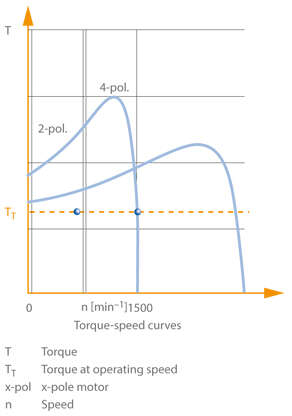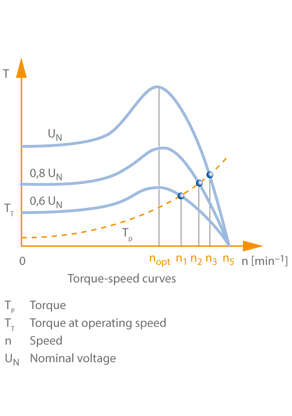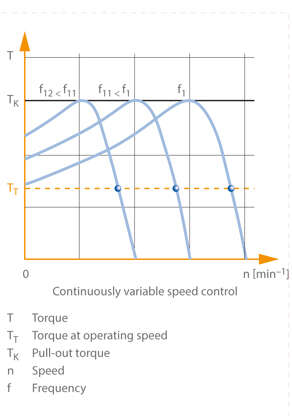Speed control
The controlled adjustment of rotational speed as it applies to rotating machines and, thus, centrifugal pumps, is also referred to as speed control. Speed control is used on centrifugal pumps to increase their energy efficiency by adjusting pump speed to the actual output (performance data) required.
- Pole pair number
Special pole-changing motors for two to four speed levels are used. Pole changing leads to sizeable differences in speed in the switching steps, which is why this type of speed adjustment is not very relevant to centrifugal pumps. See Fig. 1 Speed control

Fig. 1 Speed control: Pole change
- Slip
Reducing the voltage by means of phase angle control. Realising speed control by varying motor slip creates high slip loss in the rotor. As a result, this method is only practical when very small power ratings are involved (e.g. glandless circulator pumps). See Fig. 2 Speed control

Fig. 2 Speed control: Slip change
- Frequency
By means of a frequency inverter. Varying the frequency and voltage of three-phase asynchronous motors is the most common speed control method. This option is highly effective. It requires relatively little investment and provides a high efficiency. See Fig. 3 Speed control

Fig. 3 Speed control: Frequency change
